[ZX Spectrum, MC Lothlorien]
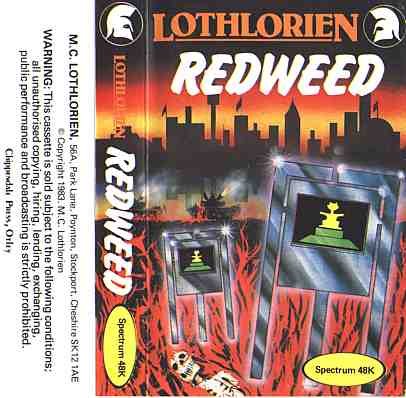
For your next mission, Lieutenant Narwhal, you will use infantry, artillery and various light vehicles to destroy enemy Titans before they can cross the battlefield !
You must be mistaken, I just did that !
Yes, and you will do it again, except this time without any of the delicate balance of Ogre !
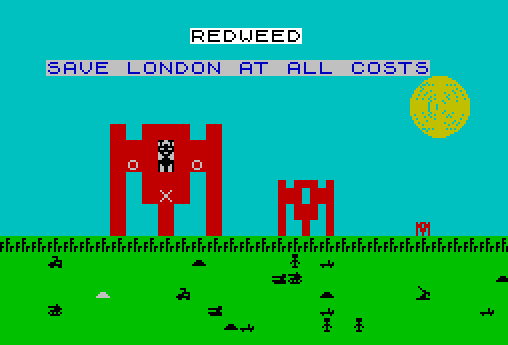
Redweed is another of the Lothlorien wargames released in July 1983. While the previously covered Battlezone 2000 was a bootleg version of Ogre, Redweed is a variation around Ogre. The player must stop 3 “Martian Triped machines” before they cross the battlefield with a collection of small units, both armour and infantry.

At difficulty 9 out of 15, the tripeds have a starting speed of 4 squares by turn and are equipped with :
- 2 powerful long-range (6 squares) projectile accelerators [pa]. Unlike Ogre missiles, they are not exhausted when used,
- 1 medium-range (3 squares) blast canon [bc]
- 3 short-range (2 squares) laser guns [lg]
- 5 close-defence (1 square) gas capsules [gc]
Of course, those weapons will be destroyed over time. The number available is displayed at all times at the bottom of the screen, along with the movement speed [mv].
In addition to their weapons, the aliens are supported by redweeds, “a semi-intelligent plant native to Mars”. One redweed spawns every turn on the battlefield and immediately paralyzes units one square adjacent (horizontally or vertically) to it. The only way to free units entrapped by redweed is to destroy the latter with the two flamethrower units.
Speaking of my units, my arsenal includes 6 units :
- Artillery, long-range, but still shorter-range than the Martian projectile accelerators, so they are not going to survive for long if my opponents still have these,
- Heavy tanks, with some serious attack power and range 3
- Light tanks, with less attack power but still range 3, in addition to being a tad faster than the heavies
- Motorized infantry, which has no advantage over a light tank and maximum range of only 1,
- Non-motorized infantry, which is like motorized infantry, except extremely slow,
- Finally, the two mobile flamethrowers, whose only advantage (apart from being able to attack redweed) is a decent armour.
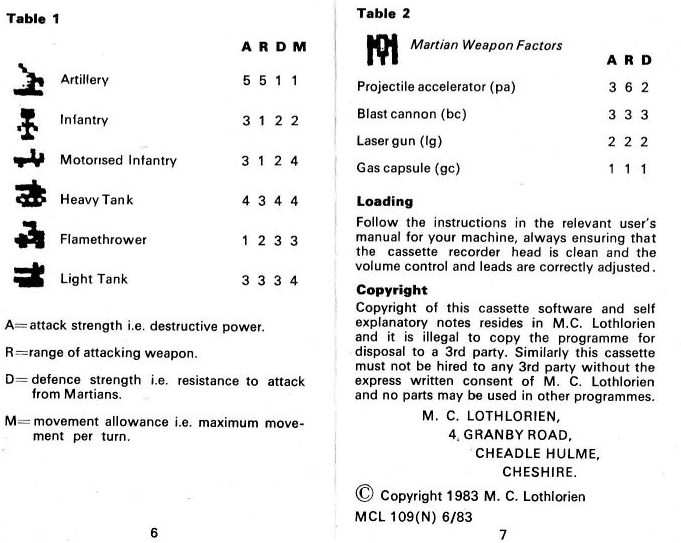
Given the raw power packed by the aliens, my opening strategy is to retreat and regroup. Meanwhile, the aliens advance. Two of them blow up mines, but between them they only lose a blast cannon :
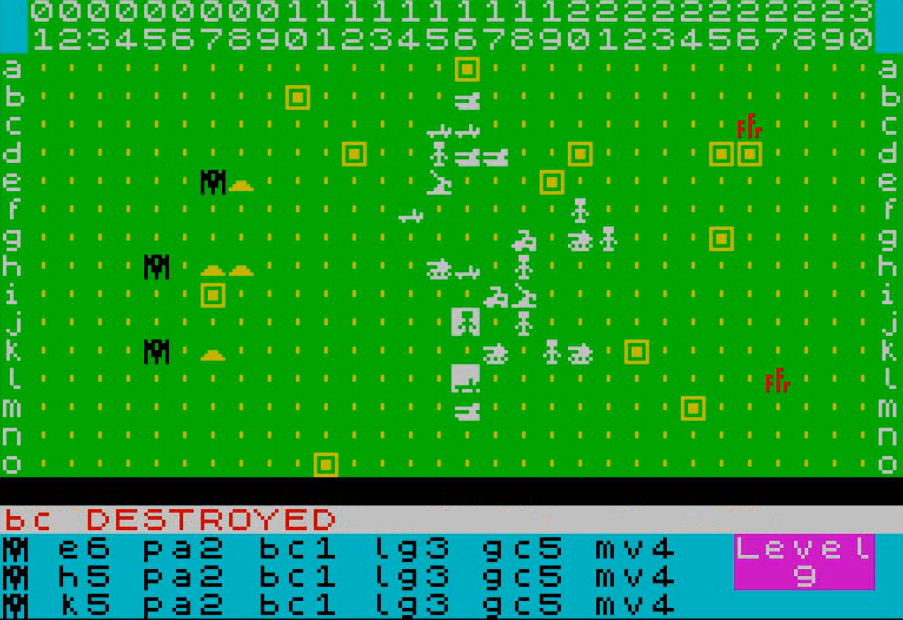
The following turn, I prepare to pounce. I put myself in a position to jump on the top triped after it moves 4 squares :
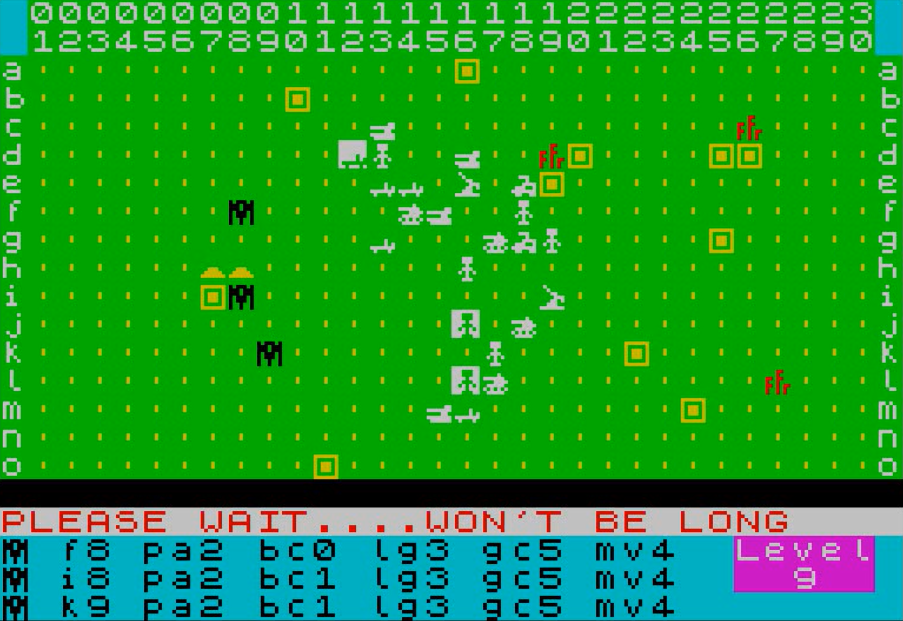
When it does (not without shooting and destroying one of my motorized infantry and one of my artillery), I go all-in on the top triped, with some units also attacking the bottom one :
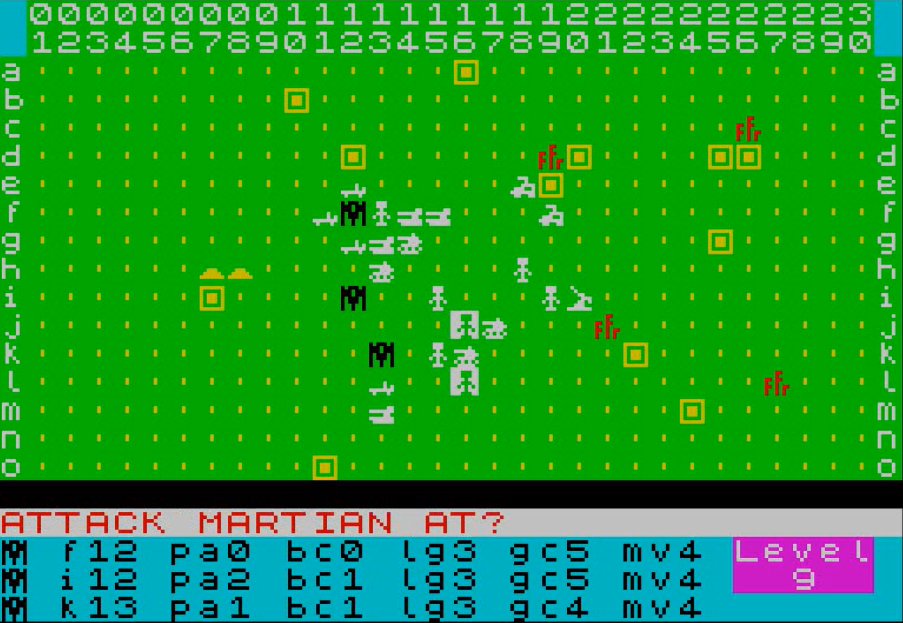
Alas, those things are sturdy. You need a 3:1 ratio to have a more-than-half chance to remove a part. For all my effort, all I can peel from the top triped is its two long-range projectile accelerators. I am luckier with the bottom one, with only a fraction of the attacks I destroy one of its projectile accelerators and a gas capsule.
The counter-attack is savage, and the Martians are lucky – in one turn I lose 6 units !
Time to change my strategy. The Aliens can only attack at the end of their movement. If I let the top one move forward at its speed of 4, it will have many targets at the end of its movement phase.
Of course, it won’t work with the middle and bottom tripeds and their remaining long range weapons. They are my focus the following turn :
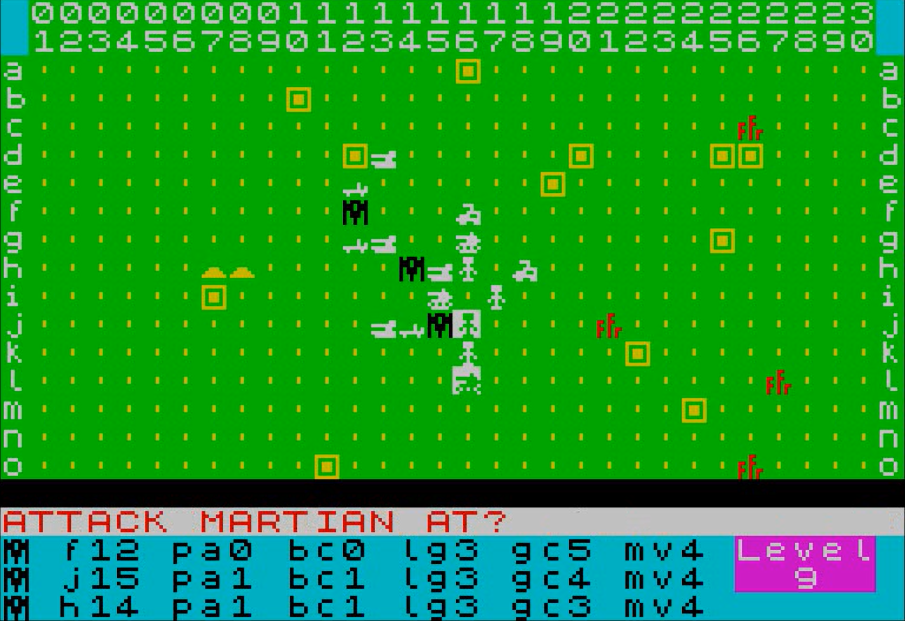
I manage to remove two more particle accelerators from the equation. On my side, I lose 3 units, two more are “disabled” and unable to move.

The bottom triped then rushes forward, I try to follow but I am unlucky and unable to damage it :
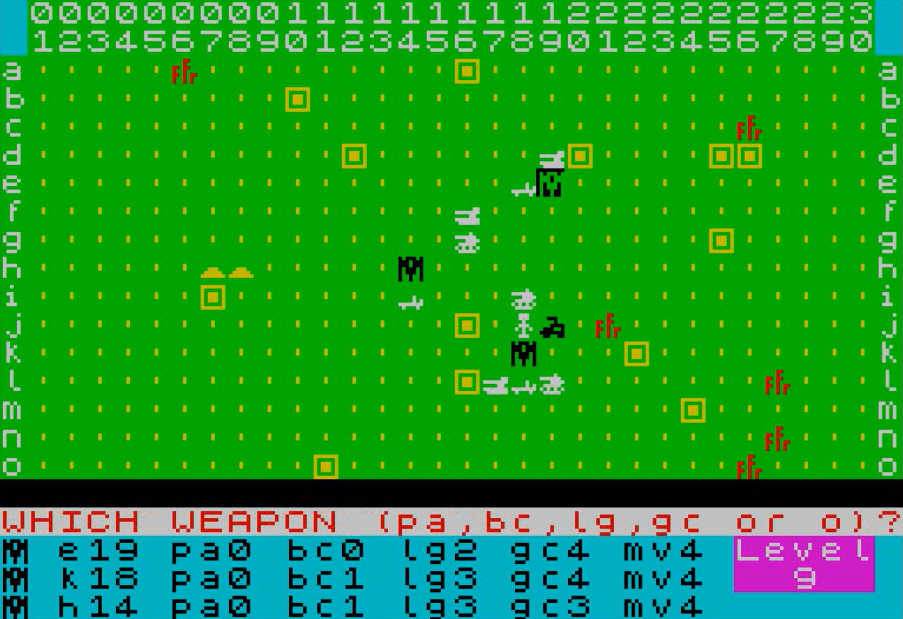
It catches back and stuns my flamethrower, and then passes next to a redweed, through which my vehicles can’t follow :
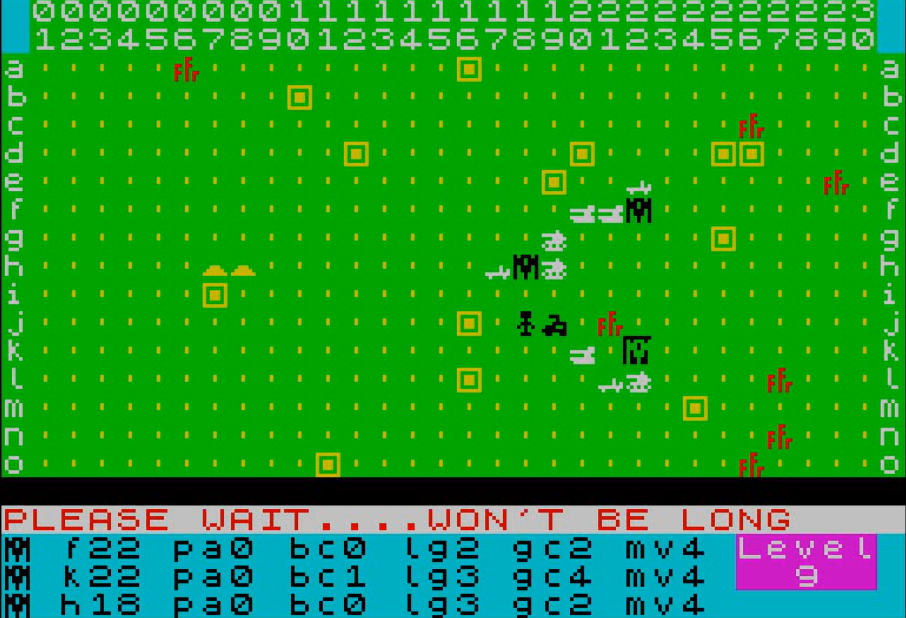
My strategy finally pays off for the top triped, which finally slows down to 2 movements due to the amount of damage it received. But the bottom triped is escaping, and I can only pursue with one tank.
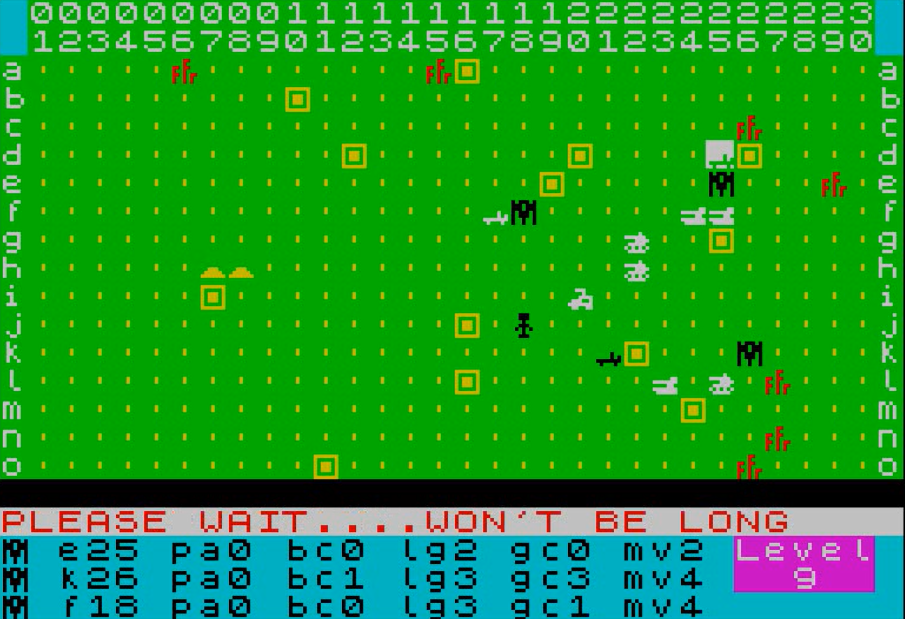
And the following turn :
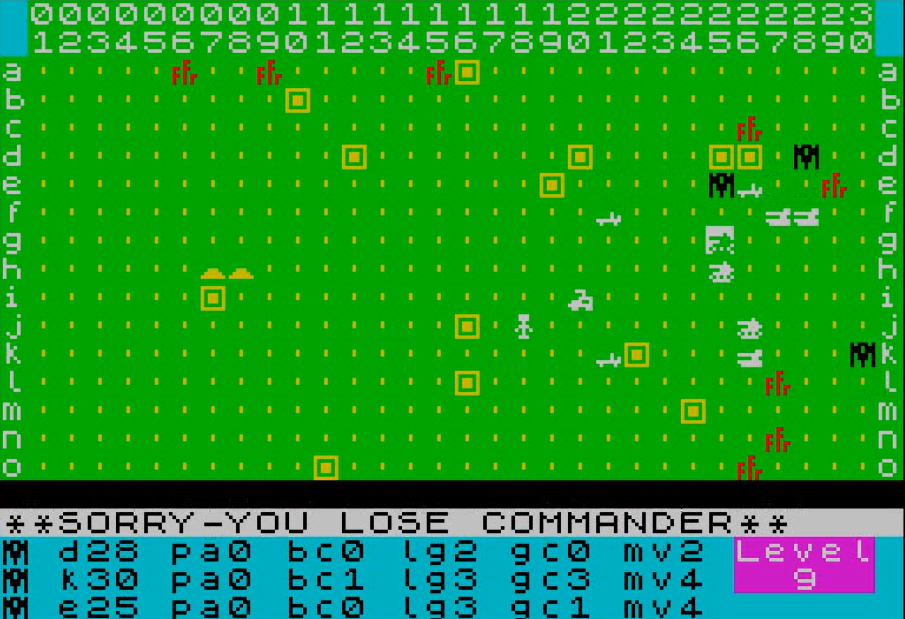
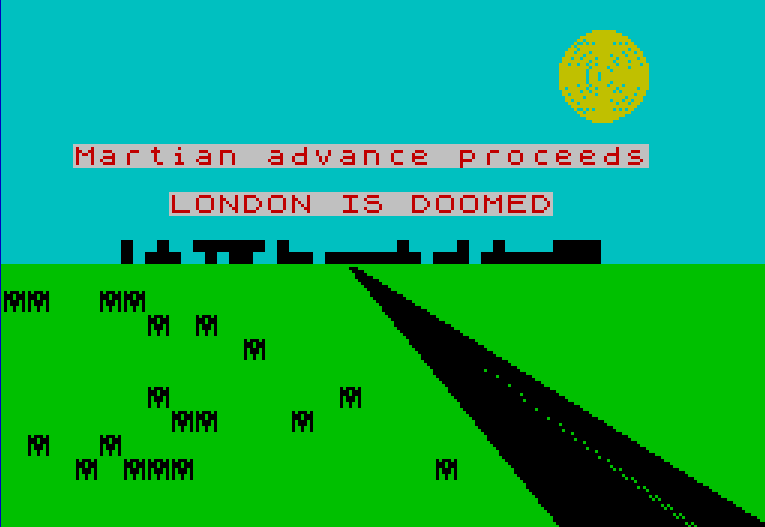
Looking back, I was pretty unlucky with my rolls and with losing 6 units in an early turn. Still, I could certainly have played better, for instance by maintaining a wall in front of the Martians, but one designed so the Martians can try to bypass it, effectively only moving East by one square every turn. But there will not be a next time, what you don’t see in the AAR is that the game is insanely long to play – one full hour. So moving directly to the Rating & Review !
Rating & Reviews
Redweed by MC Lothlorien, UK
First release : July 1983 on ZX Spectrum
Tested on : ZX Spectrum emulator (Fuse)
Total time tested : Three hours
Average duration of a battle : One hour
Complexity: Easy (1/5)
Would recommend to a modern player : No
Would recommend to a designer : No
Final Rating: Flawed and obsolete
Ranking at the time of review : 43/90
Summary :
Redweed originates from the boardgame classic Ogre, but wherever it differs from Ogre it makes the game more shallow, with the eponymous weeds not adding much to the game. Still, the ruleset is not horrible, but slow gameplay and ill-thought UI/UX issues prevent Redweed from delivering on its limited potential.
Immersion – Very poor.
UI, Clarify of rules and outcomes – Terrible. Given the size of the map and the number of units to manage, the use of coordinates to select units is puzzling, especially since Lothlorien knew how to do without it in Paras. With so many units to play, playing turns is way too long for the depth of the game.
The manual is once again lacklustre, with for instance no explanation of how attacks are resolved.
Systems – Poor. It is Ogre again, but Ogre modified to remove some of the most interesting features. There is only one special terrain (the cities, which give a defensive bonus), Ogre missiles are replaced by yet another gun, and the Terran units have a clear pecking order, instead of each of them having its role. All that’s left from Ogre is the allocation of the attacks between the different weapons. On the other hand, not giving an overrun or crushing attacks to the tripeds make unit positioning even more important than in Ogre.
As for the redweed, they are a secondary feature, though the game is still better with them inside.
Scenario design & balancing – Terrible. There are 10 15 levels of difficulty, with the Ogre Aliens getting more powerful in every one of them. Apart from that, the only variation you can introduce is where you plant your mines. The starting position of the units is always the same.
Did I make interesting decisions ? Sometimes. With three tripeds, each of them as powerful as an Ogre, but also a lot of space to cross, there are some decisions to take about who to attack and when. On the other hand, a large part of the attacks is spent optimizing against randomness (“how many units by laser gun”) and is not really interesting,
Final rating : Flawed and Obsolete. Despite featuring a diverse set of weapons and units, Redweed is fairly shallow and doesn’t bring enough to the table to make up for its obsolete UI/UX.
I could only find one short contemporary review – Crash in its 1984 “Living Guides” states it has “good value for a popular game“, but then it was sold for only £5.50 so the threshold was probably low. Nonetheless, the game is often mentioned in various articles about the British early computer wargaming industry, so it must have been popular – though not as much as the last MC Lothlorien July 1983 game I will cover next : Johnny Reb !